Asus Zenbook Duo OLED (2024) review: dual screen delight
Two displays are finally be better than one
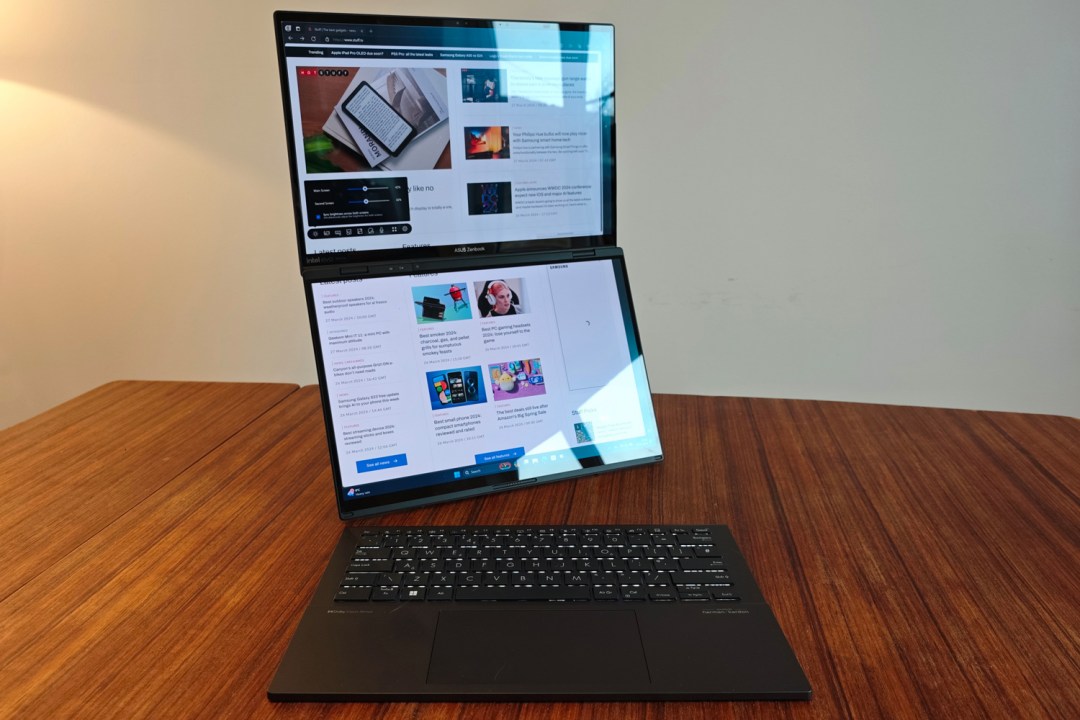
Stuff Verdict
Two stunning OLED displays and a detachable keyboard make this a portable productivity ace. Performance could be better for the cash, but the Asus Zenbook Duo OLED (2024) is otherwise unrivalled.
Pros
- Futuristic form without compromising function
- Delivers on desktop performance
- Battery life surprisingly good for a dual screen device
Cons
- GPU muscle curtailed a little by thermals
- Thicker and heavier than a 14in ultraportable
- Nowhere to stash the stylus
Introduction
One thing even the very best laptops struggle to best desktop computers in? Productivity. There’s only so much space to fit a screen on something that slides into a backpack. Which is why the Asus Zenbook Duo OLED has decided to double up on them.
Rather than build on last year’s technically impressive but not-quite-polished Asus Zenbook 17 Fold OLED, Asus has stuck to two separate screens. With a slick detachable keyboard, relatively slim dimensions and the sort of build quality I’d expect from a luxury laptop, it brings portable dual-display working closer to the mainstream than it’s ever been.
After using it as my daily machine for a week, I’m convinced. This isn’t just the ultimate evolution of the Zenbook Duo line – it’s the first laptop of its kind I would happily use on a daily basis. If you regularly lug a portable monitor around with you when working remotely, here’s why this should be at the top of your laptop wish list.
How we test laptops
Every laptop reviewed on Stuff is used as our main device throughout the testing process. We use industry standard benchmarks and tests, as well as our own years of experience, to judge general performance, battery life, display and sound quality. Manufacturers have no visibility on reviews before they appear online, and we never accept payment to feature products.
Find out more about how we test and rate products.
Design & build: that’s more like it
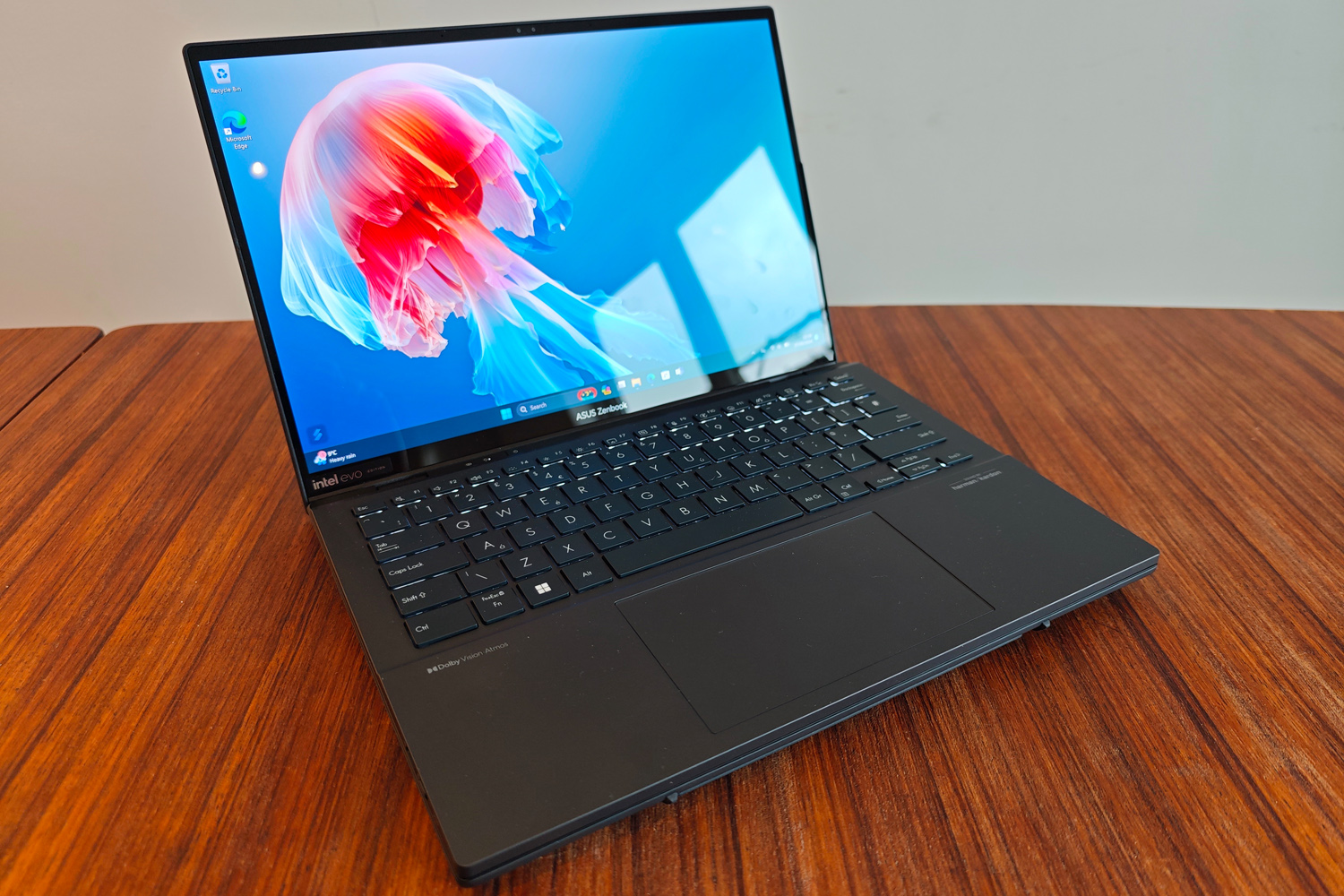
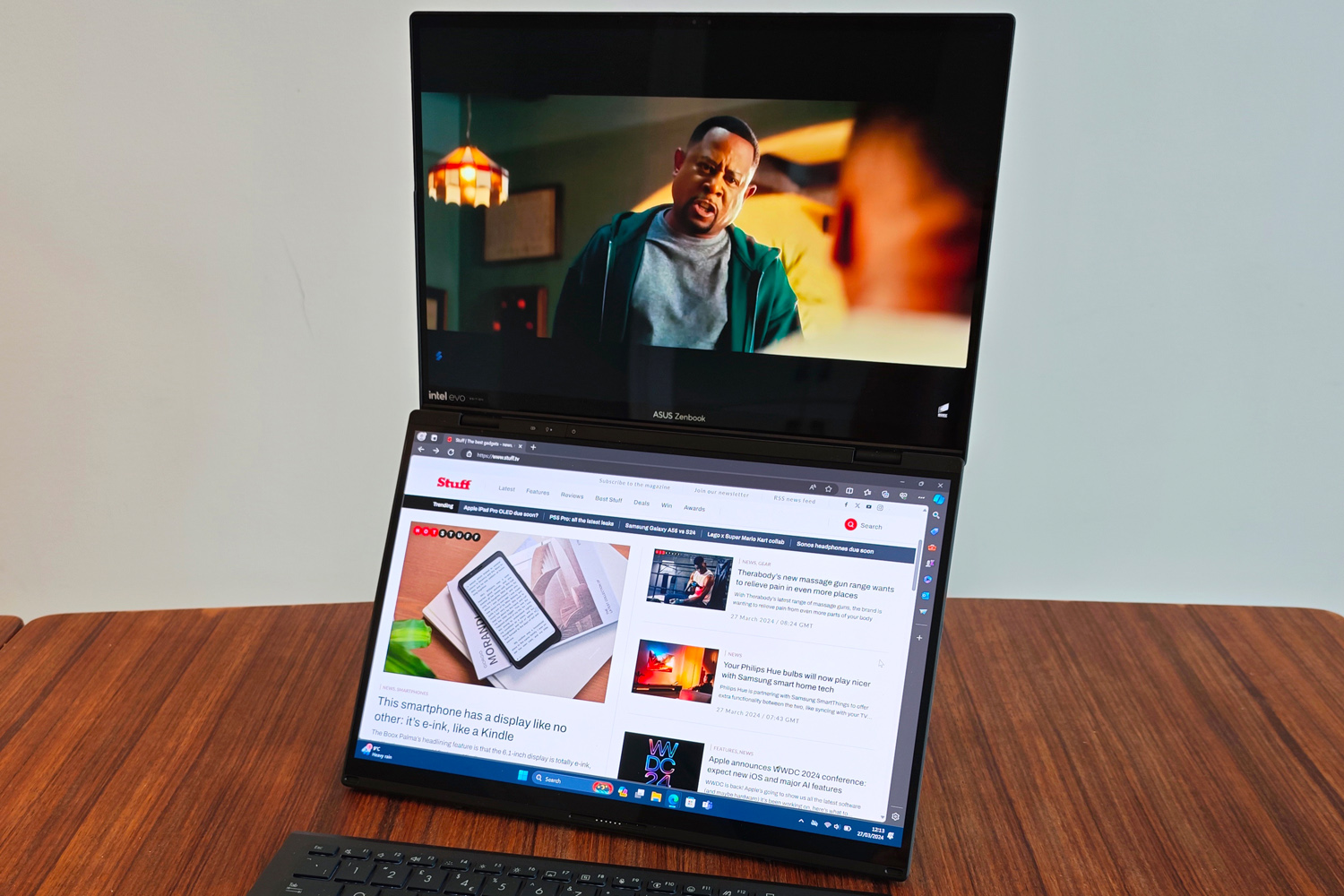
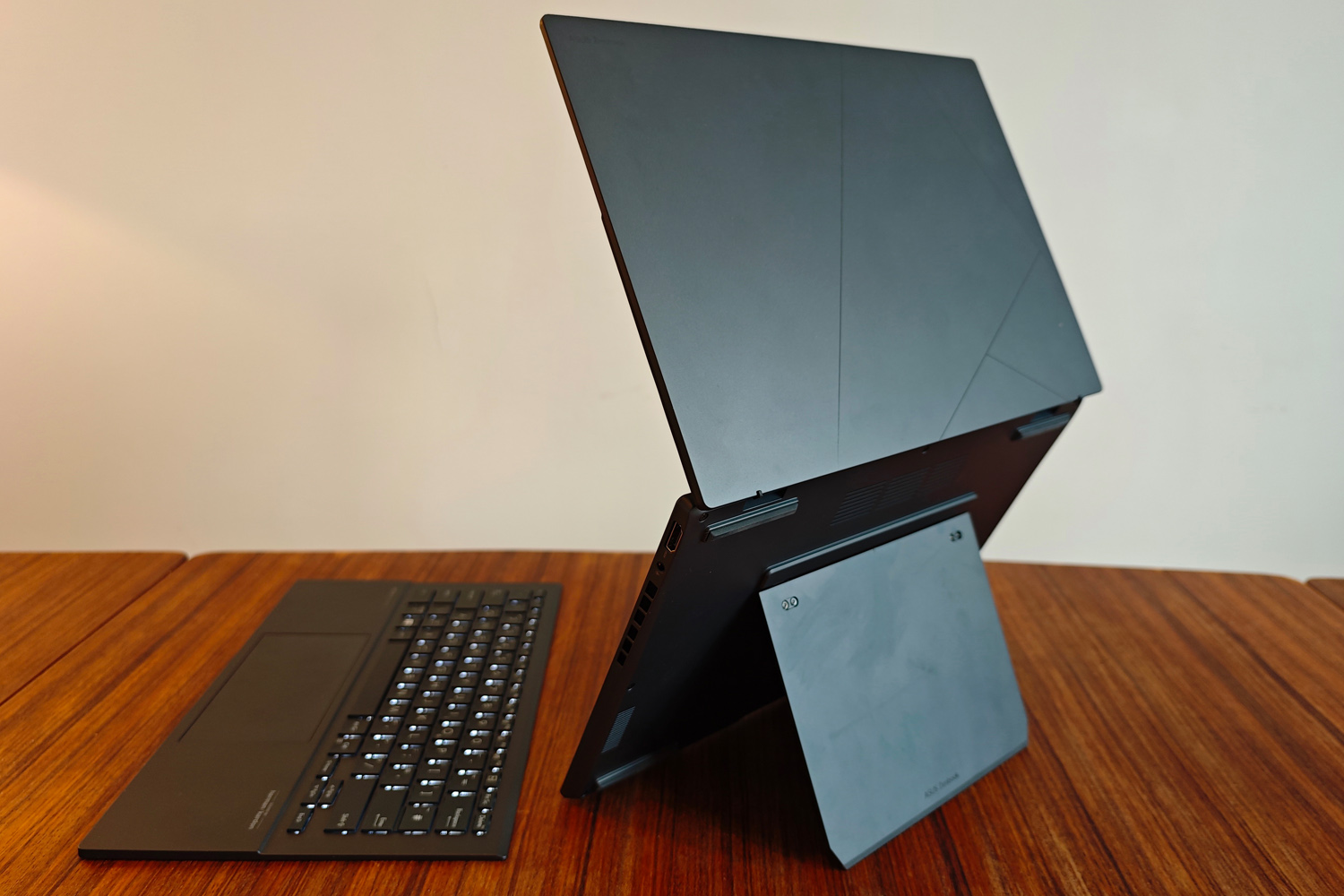
As much as the Zenbook 17 Fold OLED’s giant single folding display made a statement, thick bezels and a not-quite-fold-flat design meant I didn’t think it was quite ready for prime time. The Zenbook Duo OLED (2024), on the other hand? It looks like any other premium laptop when closed, with fairly skinny dimensions, a metal construction and Asus’ tasteful geometric logo on the lid.
Sure, it weighs a little more than a typical 14in ultraportable – but not by as much as you’d think. It’s maybe 50% thicker, too, but still on par with a compact gaming laptop. The bundled power brick is no larger than the one you’d juice up your smartphone with, so is no bother to bring with you whenever you travel.
Open it up and you might not twig it actually has two screens, rather than one. The physical keyboard sits right where I’d expect it to, and is held firmly in place with magnets. Slide it off, though, and that second screen bursts into life. You can then pop the keyboard wherever’s comfortable (it connects via Bluetooth and charges through pogo pins), or move it to one side and type using the on-screen keyboard instead.
There’s a built-in kickstand on the base of the laptop, which lets you prop it up for two vertically stacked 16:10 screens, or turned to the side in a book-style layout. It didn’t feel especially sturdy to me in that orientation, but the vertical mode was tough enough that I could use touch gestures on the upper panel without making the whole thing wobble like jelly.
Asus hasn’t skimped on ports either, with twin Thunderbolt 4/USB-Cs, a USB-A, 3.5mm headphone port and HDMI 2.1 video output. The 1080p webcam is paired with a time-of-flight sensor for Windows Hello facial recognition; it worked perfectly well throughout my testing. There’s also a bundled Asus Pen stylus, although there’s nowhere on the laptop itself to stash it – not even a magnet to hold it in place at the side of the machine.
As a whole, the Zenbook Duo OLED is just plain better executed than other dual-screen machines, including the Lenovo Yoga Book 9i. It behaves like a regular laptop when you want it to, then doubles up on screen space with minimal fuss.
Screens & sound: double hitter
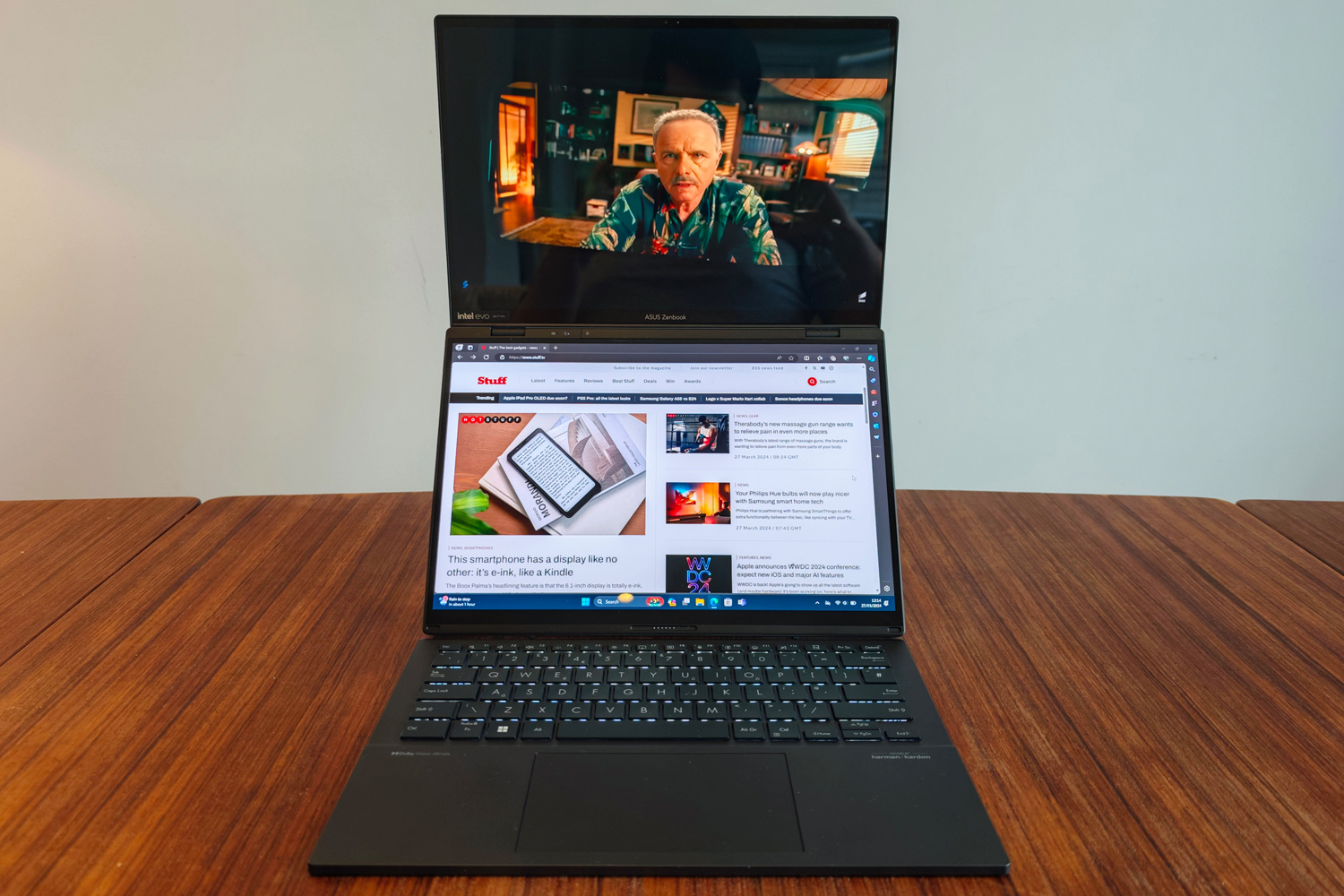
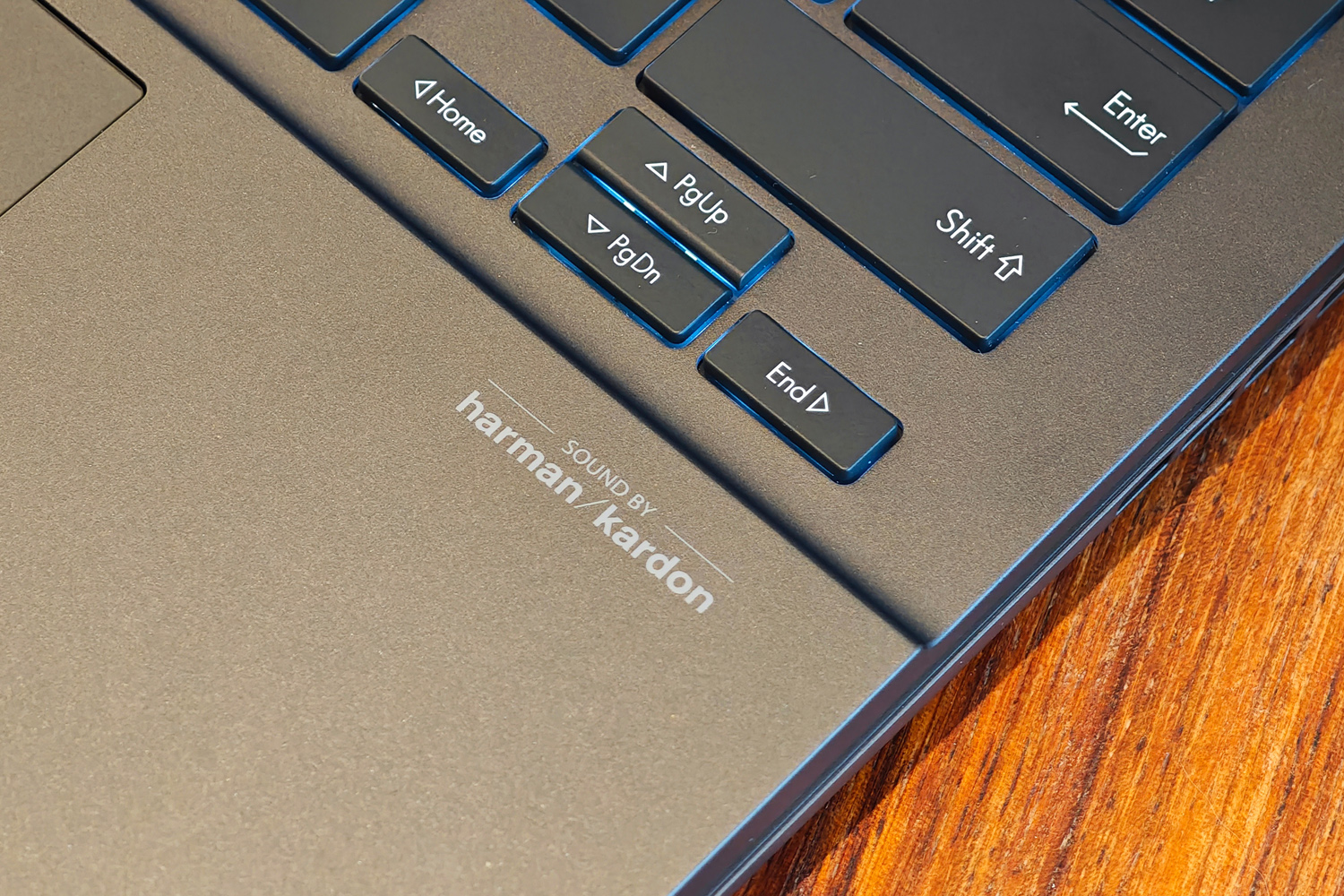
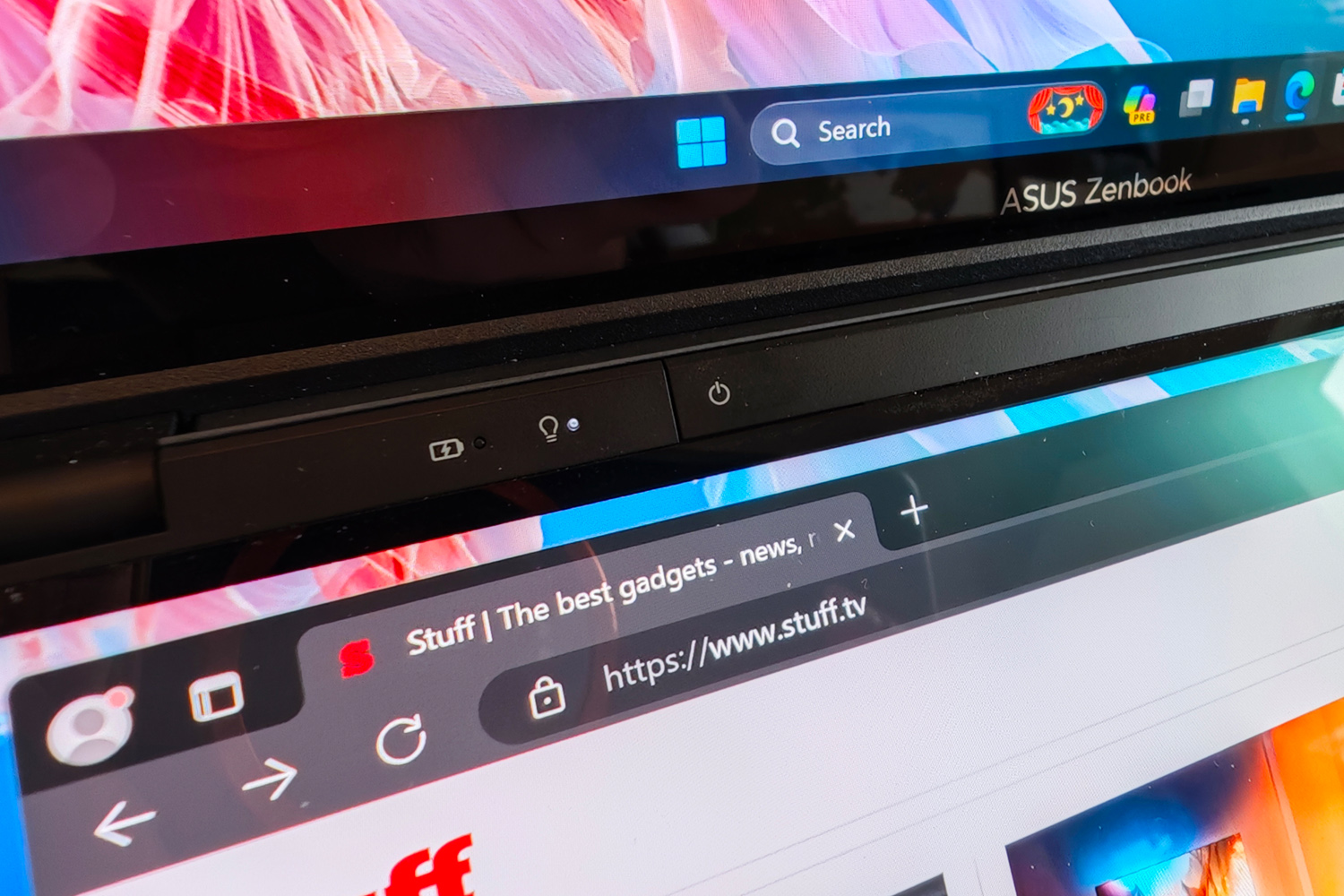
Asus laptops have used OLEDs for a while, meaning the firm has a huge head start over rivals. That was clear to see after just a few minutes with the Zenbook Duo OLED.
A single 14in OLED screen with a 2880×1800 resolution, 120Hz refresh rate and 500 nit peak brightness (for HDR video) would be plenty, but here you’re getting two of ’em – as long as you opt for the most powerful model, anyway. There are versions with Full HD resolution, 60Hz panels, which still use OLED tech.
The panels are effectively identical, with no difference in terms of contrast, colour reproduction or viewing angle. Colour accuracy is excellent, with full sRGB and DCI-P3 coverage, making it a fantastic choice for creative types. Images and videos absolutely pop, with impactful shadows and bright highlights. The high refresh rate also guarantees smooth motion, and also helps make touch inputs feel instantly responsive.
They each get very close to Asus’ claimed 400 nits brightness for SDR content, which was more than enough for indoor working. You can also control the brightness independently, which I found handy when using the bottom screen as an input device rather than to view content. I get that some may not like the fact a bezel breaks up the flow of a “full screen” view, but I’ll take that over the Zenbook Fold’s shortcomings any day.
I had no major complaints about the built-in speakers, which have a respectable amount of volume given the laptop’s compact footprint and skinny dimensions. You won’t want to crank things beyond 50%, as that’s where the high-end starts to become rather shrill, but clarity is otherwise decent across the board.
Keyboard & touchpad: pick a preference
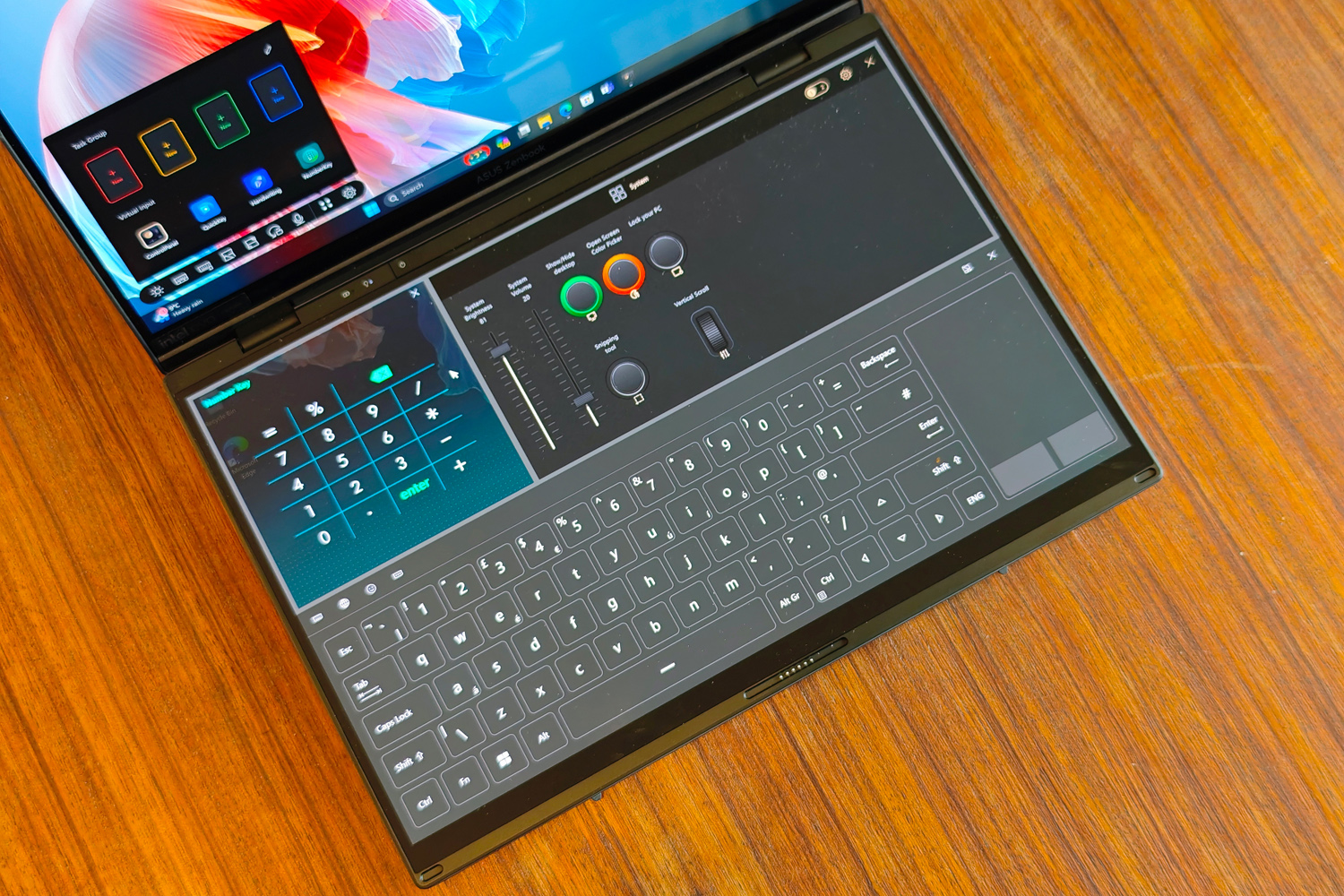

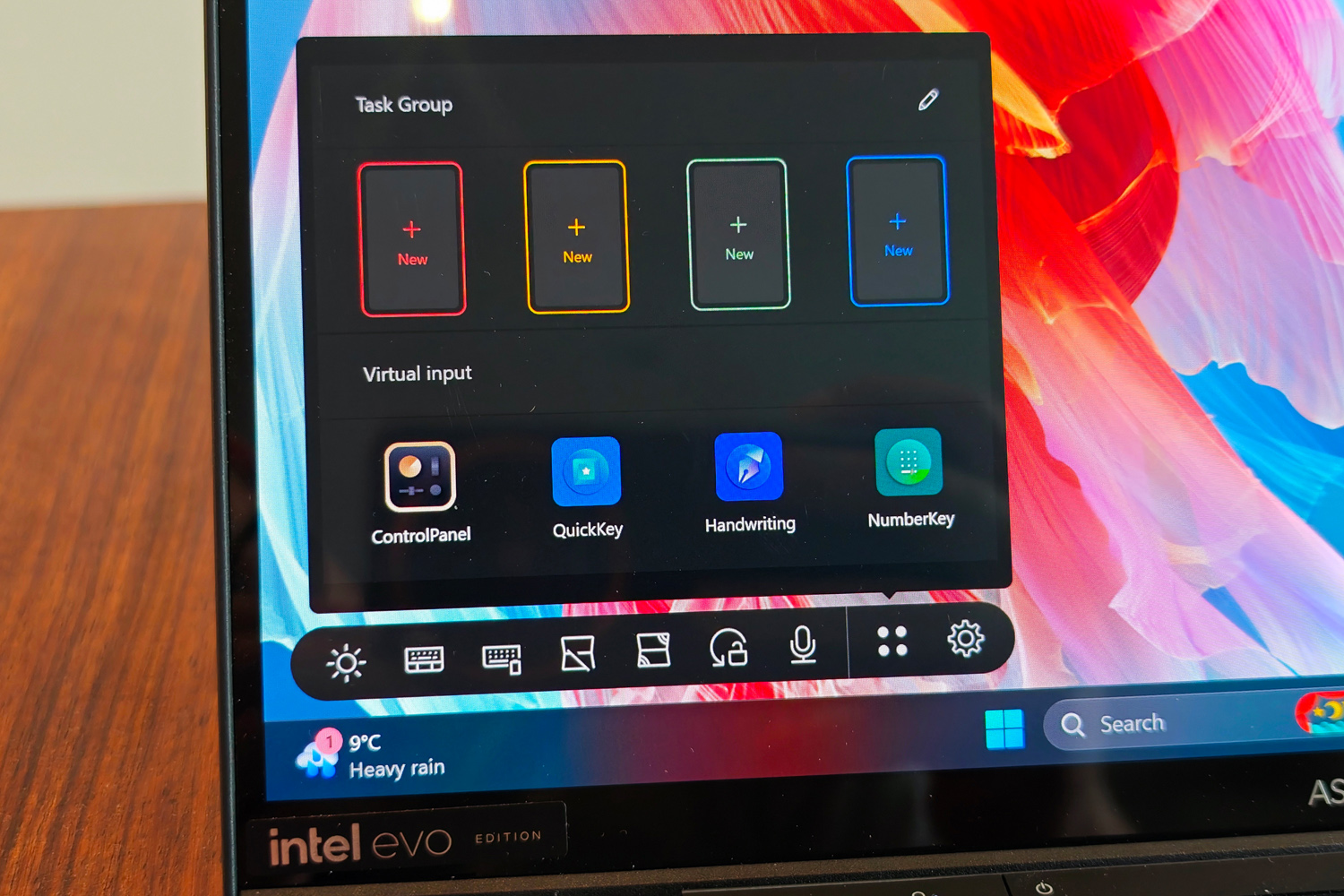
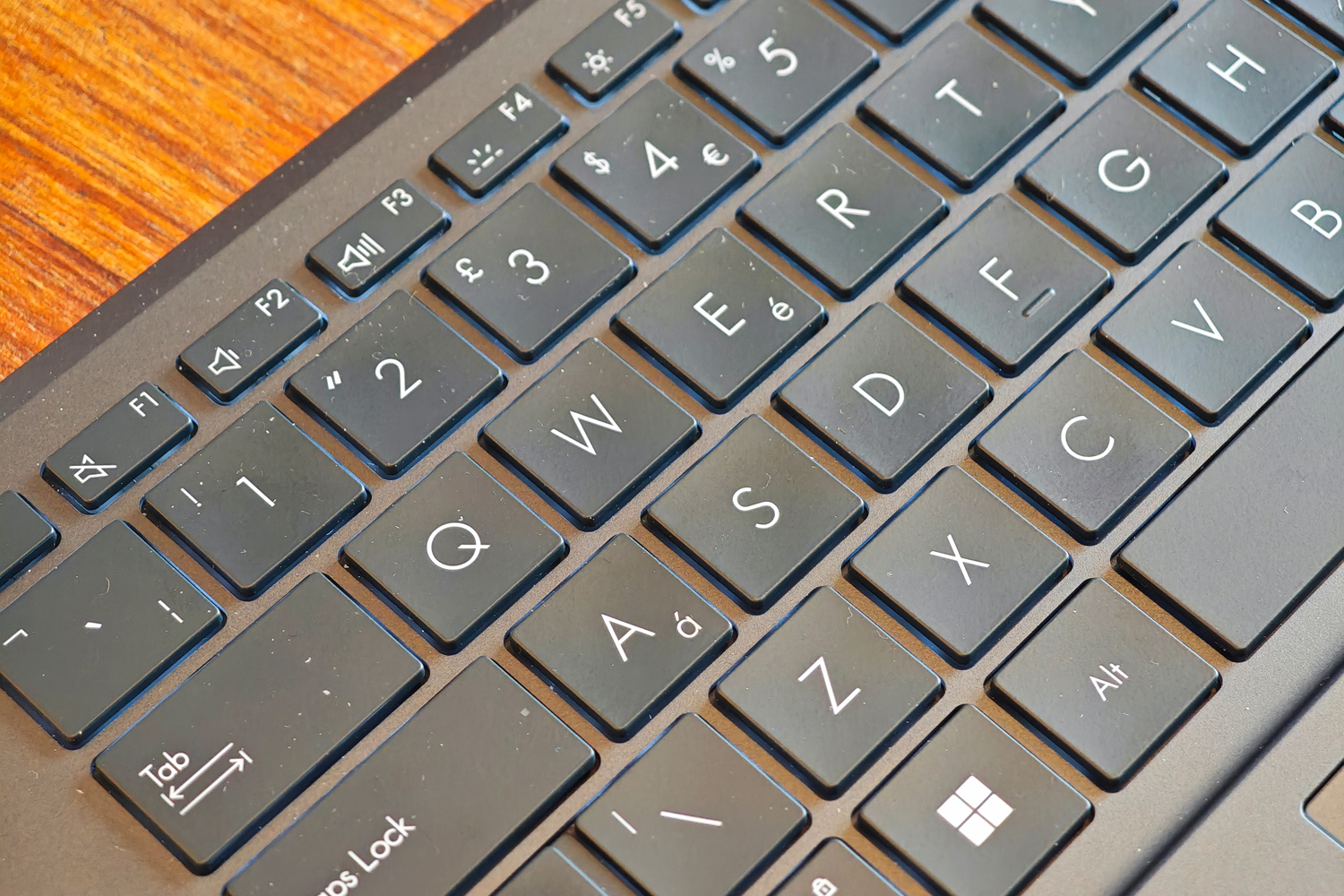
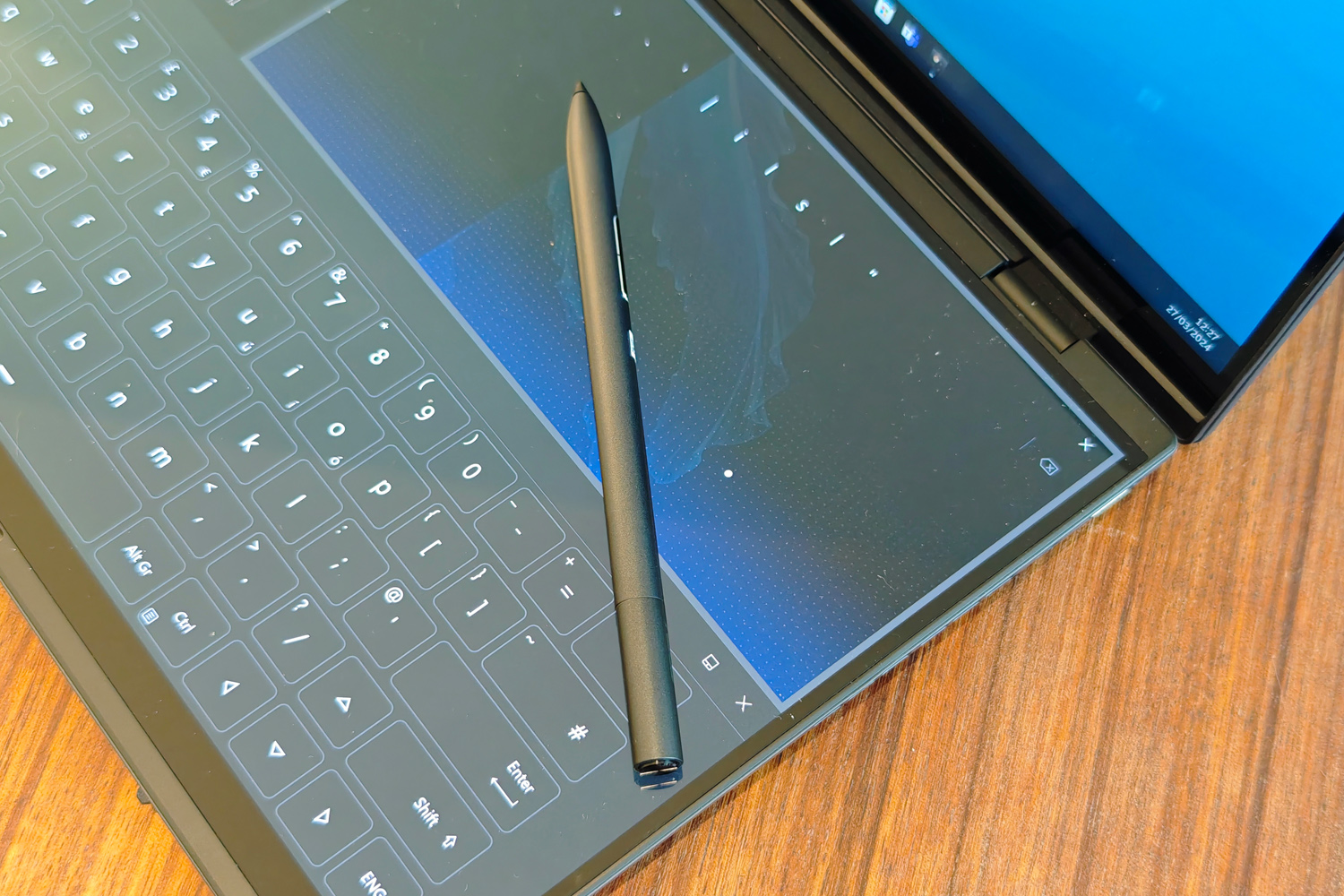
As much as I’m used to tapping out emails on phone touchscreens, doing the same on a larger display is a different ball game. Asus has tried to tempt me by making the Zenbook Duo OLED’s onscreen keyboard highly customisable, with options for adding a virtual touchpad, handwriting input and a whole bunch of shortcut keys through its ScreenXpert software.
You can activate the different virtual keyboards with multi-finger taps, which is far quicker than searching for a desktop shortcut or Taskbar icon. I found that the lack of physical feedback meant more typos when writing longer documents, but it was handy to have for certain apps once I’d done some customising. Imagine having a complete set of Premier Pro macros, or a bunch of audio sliders for editing podcasts. I can’t wait to see what third-party developers come up with.
The physical keyboard, on the other hand, feels just like the ones I’m familiar with on other Asus laptops, if a little on the shallow side. Latency was nonexistent when physically connected to the laptop thanks to those pogo pins, and they guaranteed the keyboard never had a flat battery whenever I removed it to use wirelessly. The whole thing is backlit, which made it ideal for low light working.
Each key has a decent amount of travel and a soft action. The magnets meant it stayed firmly in place, even when I was bashing keys like I was hammering nails. That meant I was typing at full speed in next to no time, although I found it more comfortable to use when docked on the laptop; when separated it sits very low to the desk, with no way to adjust the angle.
The touchpad beneath it is a generous size, responds well to multi-touch inputs, and felt brilliantly smooth under my fingers.
Performance: ultra power
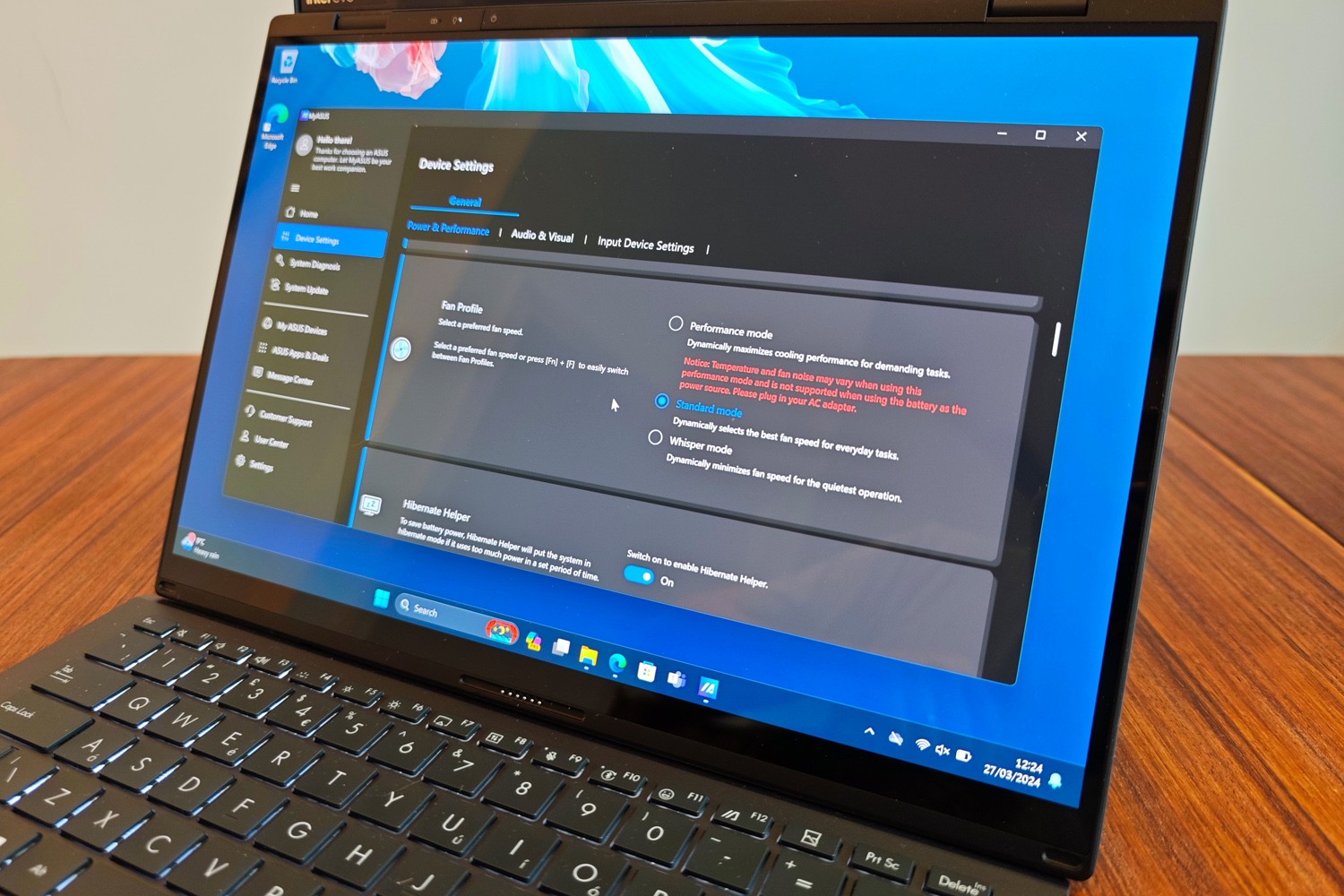
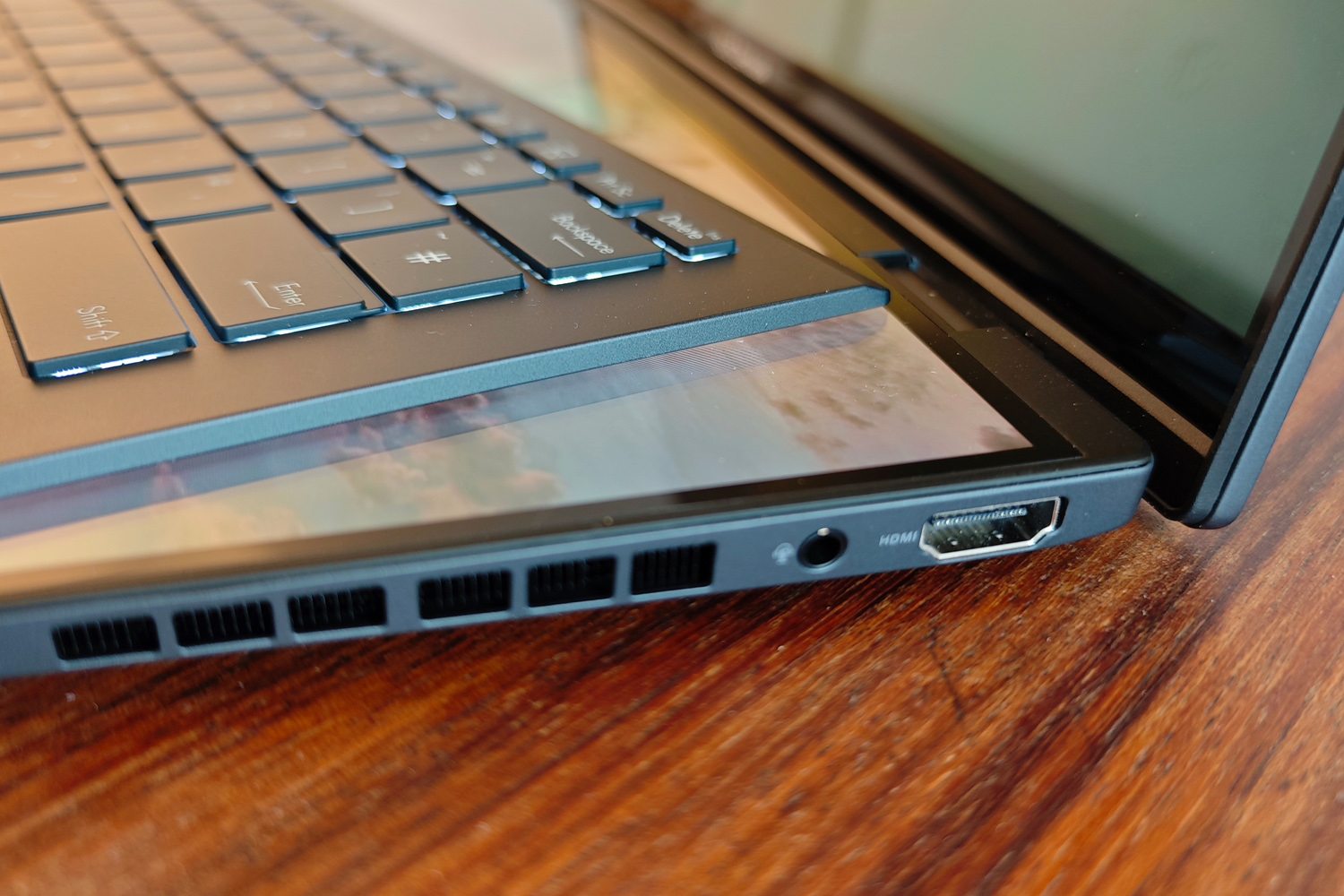
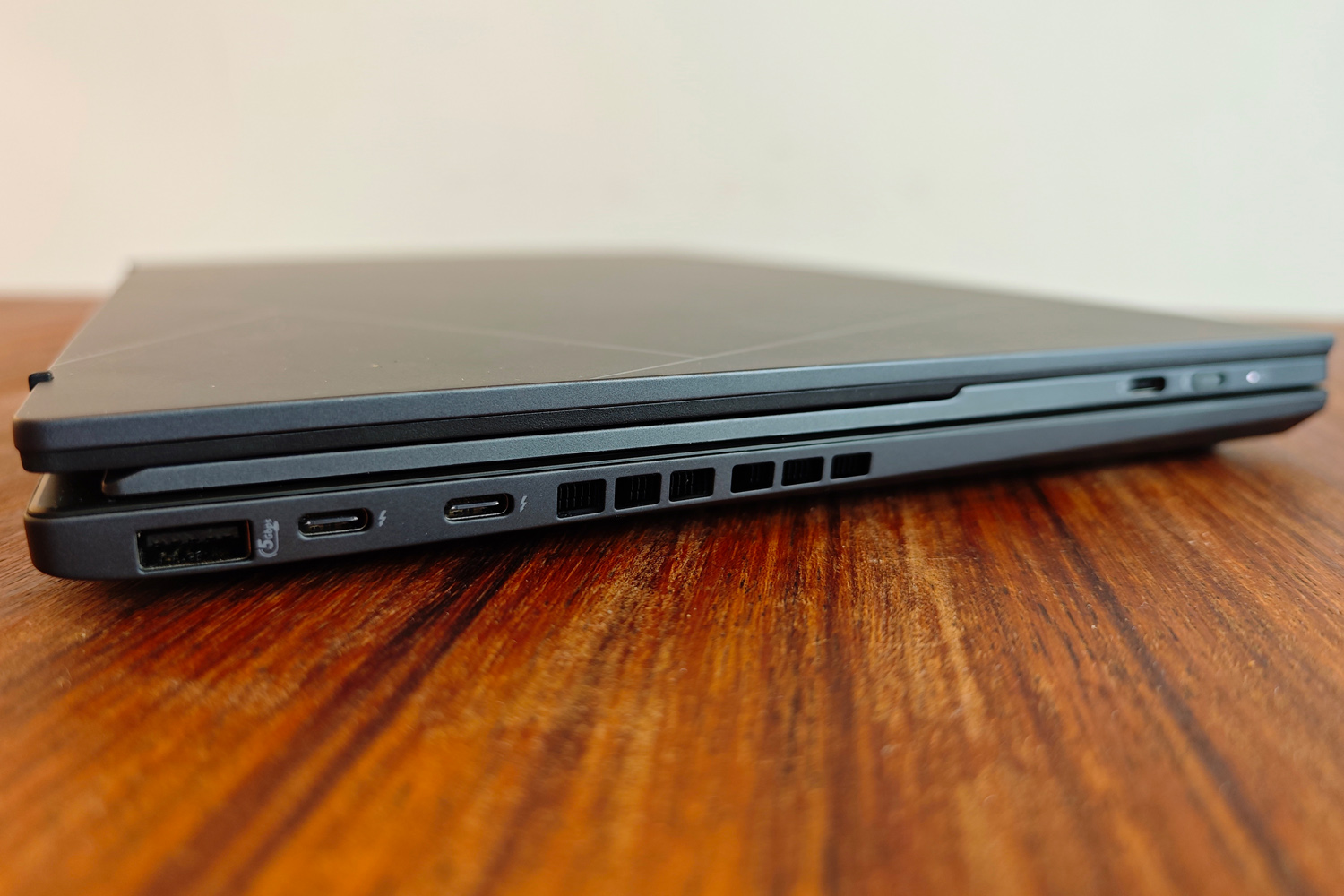
The Zenbook Duo OLED was one of the first laptops to get an Intel Core Ultra processor, otherwise known as Meteor Lake. These chips include an AI-boosting NPU for the first time, along with integrated graphics based on Intel’s Arc desktop GPUs. Performance has seen a more modest boost over the previous generation, but energy efficiency has also improved, which means great things for battery life – handy when you have two 14in screens to power.
My top-spec review unit was fitted with a 16-core Ultra 9 185H, which can reach a speedy 5.1GHz when on boost. It was paired with 32GB of RAM and a 2TB SSD, making this a rather potent ultraportable on paper. Single app desktop performance was undeniably speedy, and multitasking was never an issue. I had multiple Chrome windows, documents and videos running side-by-side across both screens and experienced no slowdown.
Thermal limits come into play when you’re doing anything seriously demanding, so while it outmuscled the Zenbook 14 OLED I tested recently, some rivals using Core Ultra 7 155H CPUs have it bested in certain benchmarks. It trades blows with the Apple MacBook Air (M2) in other tests, but you’ve got to force the fan profile to its louder Performance setting to do so. Ultimately I wonder if the Core Ultra 9 was overkill here – an Ultra 7 puts in a similar showing, without generating as much heat.
The Arc GPU can’t deliver playable frame rates at the Zenbook’s native resolution, but drop down to 1080p and be realistic with the advanced graphics settings, and games run surprisingly well on this thing. Intel’s XeSS upsampling can make a big difference, too. I found older titles worked better, with newer ones like Cyberpunk 2077 struggling to get north of 30fps on modest detail settings. This isn’t a gaming laptop, of course, but simpler MOBAs and shooters like League of Legends or Fortnite aren’t entirely out of its comfort zone.
AI enhancements are still few and far between, so don’t see them as a specific reason to buy the Zenbook Duo OLED. it can add background blur to your video calls and intelligently remove background noise from audio in certain apps, but there aren’t any mainstream ways to create generative AI images just yet.
Battery life: more than you think
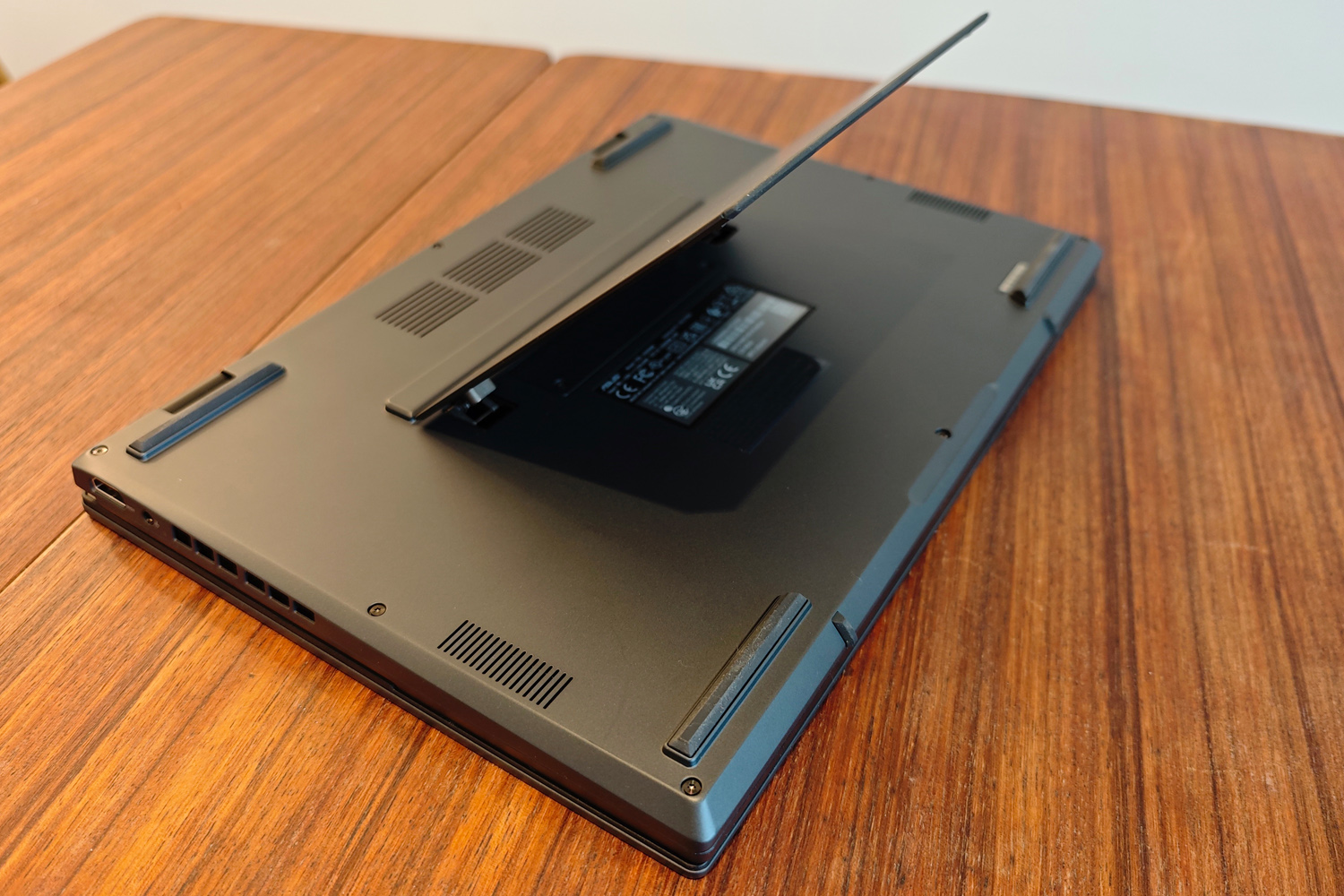
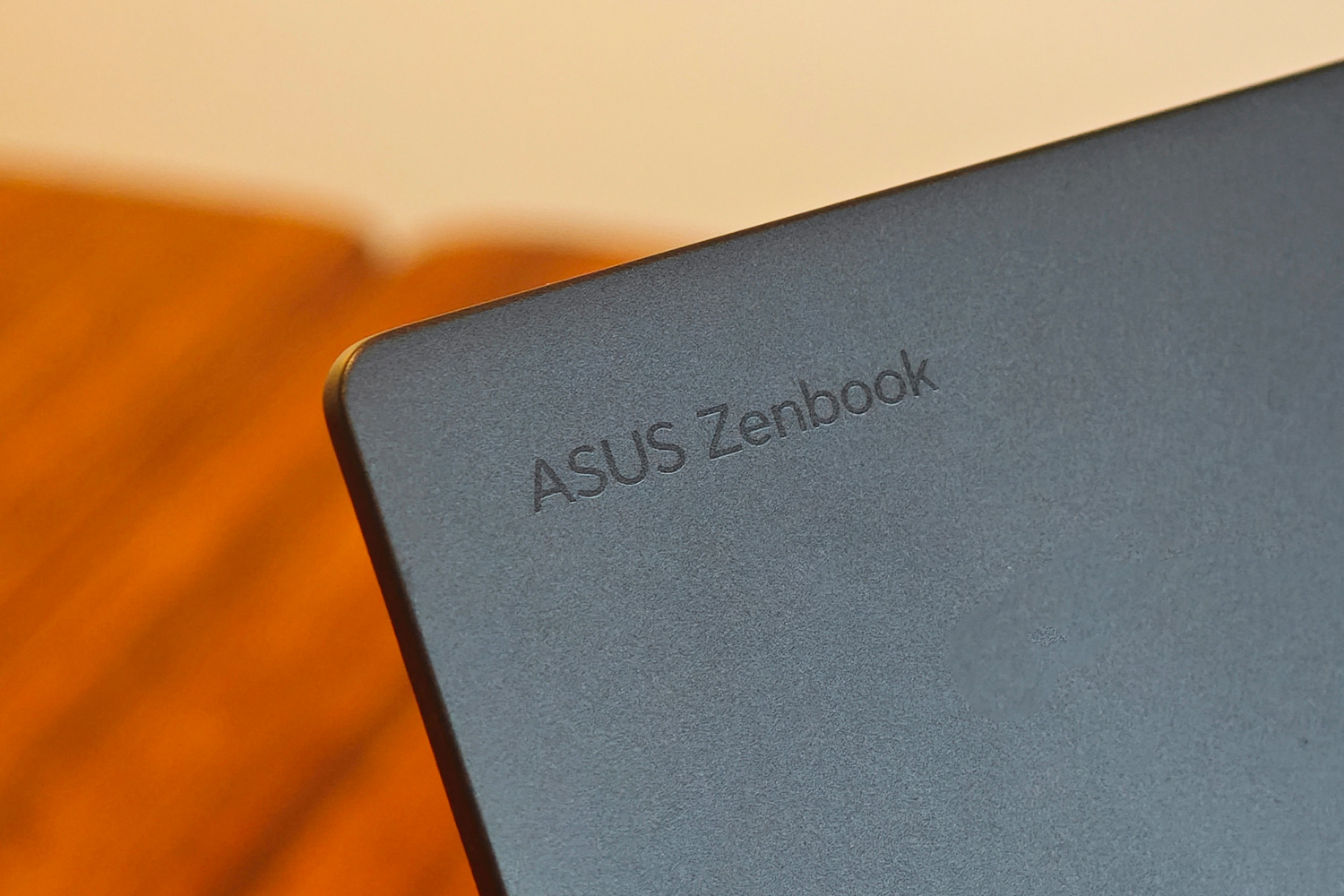
A 75Whr battery is nothing to sniff at in a 14in laptop, although here it has two screens to keep juiced rather than one. How long you can spend away from the mains will depend on whether you’re sticking to a traditional laptop layout, or want both screens blaring simultaneously.
With the keyboard covering the lower screen, I found the Zenbook Duo OLED was good for between nine and eleven hours of typical use – think web browsing, YouTube playback, Spotify streaming and the odd image edit. That puts it firmly behind longevity champs such as the MacBook Air (M2), but is by no means a bad showing.
If your work day is a little more demanding, or you want to use both screens, I’d recommend keeping the power brick close by. Battery life dropped by three or four hours, depending on how hard I was pushing performance. That still equals six hours of use, though, which is close to a full working day of dual-screen productivity.
Asus Zenbook Duo OLED (2024) verdict
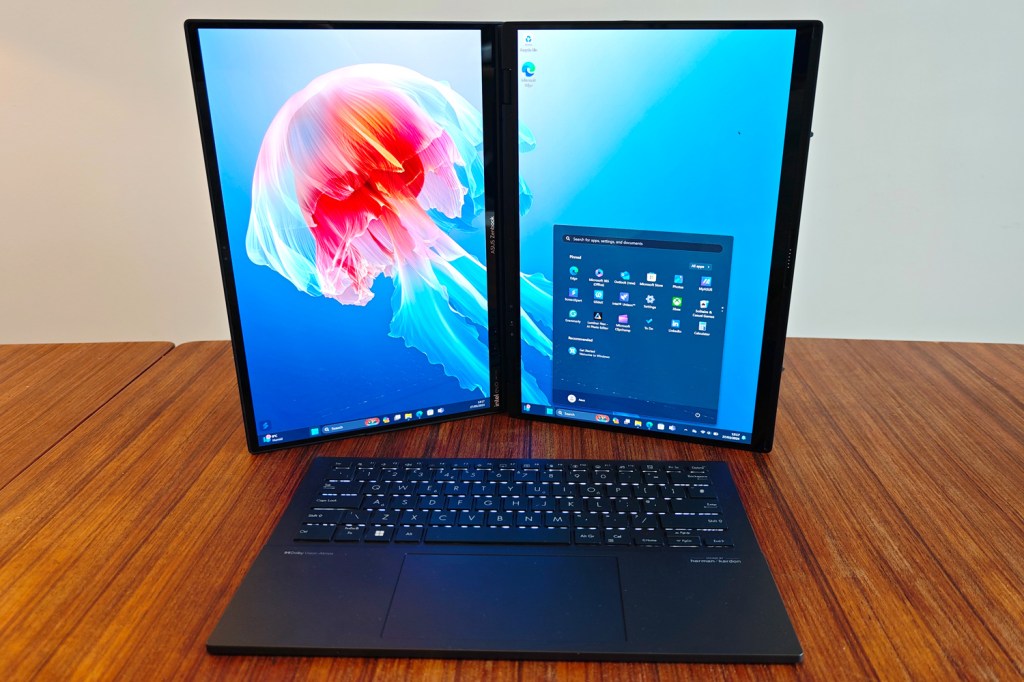
I was amazed how quickly the Zenbook Duo OLED transformed my work habits. Suddenly I wasn’t tied to the desk where my monitor lives; I could move around the house, sit outside, or travel while still enjoying dual-screen productivity. It makes the Zenbook 17 Fold OLED look like a rough draft, and puts other twin-display laptops in the shade. But it’s not just a gimmick, either; if you don’t need a second screen, this behaves just like a traditional machine.
There’s no escaping this is an expensive machine, and one I would argue has too powerful a processor for its own good. A Core Ultra 7 would be just as capable for daily duties, though there doesn’t seem to be a variant with both that chip and the higher resolution displays.
Not everyone needs a second screen, meaning this is still a niche model – but with very respectable battery life, software tweaks that take full advantage of the form factor, and ample connectivity, this has to be the best laptop of its type.
Stuff Says…
Two stunning OLED displays and a detachable keyboard make this a portable productivity ace. Performance could be better for the cash, but the Asus Zenbook Duo OLED (2024) is otherwise unrivalled.
Pros
Futuristic form without compromising function
Delivers on desktop performance
Battery life surprisingly good for a dual screen device
Cons
GPU muscle curtailed a little by thermals
Thicker and heavier than a 14in ultraportable
Nowhere to stash the stylus
Asus Zenbook Duo OLED (2024) technical specifications
| Screen | 2x 14in, 2880×1800 OLED w/ 120Hz |
| CPU | Intel Core Ultra 9 |
| Memory | 16/32GB RAM |
| Storage | 1/2TB SSD |
| Operating system | Windows 11 |
| Connectivity | HDMI 2.1, Thunderbolt 4 x2, 3.5mm, USB-A |
| Battery | 75Wh |
| Dimensions | 314x218x19mm, 1.65kg (with keyboard) |
